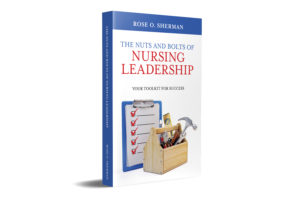By Rose O. Sherman, EdD, RN, NEA-BC, FAAN
Engagement and satisfaction surveys indicate that many nurses don’t feel involved in the decision-making process. The flip side is that getting nurses to attend or be involved in professional governance is complicated. Many nurses tell their leaders that they don’t have the emotional bandwidth to do anything but come to work, put in their 12 hours, and go home. Recent Harvard research on Generation Z also indicates that they report growing cynicism about the ability of governance processes to change outcomes.
Professional governance structures are designed to empower direct-care nurses to contribute collaboratively as decision-makers regarding the nursing practice setting. Yet what good are they if no one attends? We need the involvement of nurses in developing standards of practice, policies and procedures, resource utilization and stewardship, evidence-based practice and research, and quality and performance improvement, especially at the unit level. But if we set up a structure to do this that doesn’t appeal to our Generation Z and Millennial nurses – they don’t participate.
I have been asking questions about engaging nurses in decision-making for the last 27 months. Progressive organizations realize that their governance models are cumbersome and better suited to the Baby Boomer personality. One nursing instructor told me that she noticed a decided lack of interest in the PowerPoint slides she showed about their current governance structure during onboarding. She then stopped and asked these new nurses their thoughts about having a voice in their practice. She observed they wanted to have a voice but could not believe how complicated it seemed. She said one nurse finally said – can’t you find some more straightforward way to involve us that does not include coming in on our days off.
Some health systems are doing just that. One Magnet coordinator told me that two things are essential to professional governance today. The first is that participation opportunities should be accessible without necessarily sitting in a committee meeting. The second is that loops get closed quickly, and decisions are communicated. Young nurses, she observed, get very frustrated when we are rehashing the same decisions month after month. They don’t see progress and so they withdraw. They can go home and order something from Amazon and get it the next day, so they throw up their hands when you tell them that decisions need to go through three different committees. In some ways, healthcare systems are big bureaucracies, and that type of slow decision-making is a bad fit with the Generation Z personality. We have learned that speed to hire is a vital recruitment differentiator, but speed to decision-making is a whole different story.
One professional practice coordinator told me they have completely shifted their unit council meetings. During COVID, we did ZOOM meetings and noticed they were better attended by staff. All their unit-based practice council meetings have stayed virtual. The meeting agendas usually have no more than three items, and we try to put in a time for each agenda item. I urge the staff to attend when a decision is on the agenda that is important to them. The meetings are kept to 45 minutes and are recorded and posted to our FaceBook page. We have added fun to the meeting – usually a contest with a prize at each meeting. Staff can be on camera or off-camera. They can come on live to voice opinions or put their comments in the chat which we copy. We use the polling function for decisions and ideas. The meeting starts with closing the loop on decisions from previous sessions. I notice much younger staff come in from home on their phones – some are on treadmills. We even have nurses who attend part of the meeting on their phones while on breaks from work. Of course, any topic involving scheduling or technology selection tends to get better attendance, but we try to meet them where they are. I am always asking them – how can we do this better?
There are times in our careers when we need to revisit our sacred cows, and professional governance may be one of those. Ultimately, the purpose of professional governance is to seek input but how we do that today may need to look very different than in the pre-COVID era. We have a different workforce and need to respect their ideas about participation.
© emergingrnleader.com 2022
Workshops are now also available onsite or hybrid.
Our Most Popular Right Now – Become the Boss No One Wants to Leave Nurse Retention in Turbulent Times
Give your leadership team the gift of a highly rated webinar – Nursing Leadership in 2022: Rebooting after a Life-Quake A Nursing Leadership Reboot Workshop
If you have a lot of new leaders consider doing a Nuts and Bolts of Nursing Leadership Program – Nuts and Bolts Flyer Final
Read the Nurse Leader Coach – Available at Amazon and Other Book Sellers
Recommended Book by the Association of Critical Care Nurses – The Nuts and Bolts of Nursing Leadership: Your Toolkit for Success




 LinkedIn
LinkedIn Instagram
Instagram